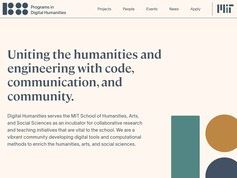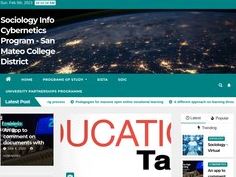In 1983, the National Commission on Excellence in Education released the report, A Nation at Risk, that identified technology education as one of the solutions to regaining America's former leadership in industry and science. It also proclaimed technology as the solution to educational achievement gaps between low income and affluent communities. Though in 2001 No Child Left Behind renewed the push for more technology, the narrowing of the achievement gap has not been solved by the presence computer education due to inequities in how technology is taught and used in schools..
Original Hopes for Computers in Schools
According to Margolis's research of literature, reported in the book Stuck in the Shallow End, technology has been viewed as the solution to educational crises ranging from creating engaging curricula to closing the social equity gap. School districts, individual states, and the federal government have all devoted funds to making technology available to all students so they can learn basic computer skills and how to use technology for a variety of educational purposes.
Technology policies now include provisions for purchasing computers, wiring schools, maintaining technology staff, and technology integration throughout the curriculum. Elementary age students are taught keyboarding; middle and high school students take classes to learn how to use basic applications. Some high school students have access to specialized software in classes such as video production, electronics, graphic arts, and computer science. Margolis's research uncovers evidence that access to technology does not guarantee access to engaging curricula or a narrowing of the achievement gap.
How Technology Fails Some Students
It is a misconception that technology is a guaranteed method for creating engaging curricula. Margolis provides a glimpse of how often technology based lessons are frequently cut-and-paste or built upon following specific directions, and how rare it is to find technology classes where students are required to use higher order thinking skills or solve real-world problems. She includes in her book conversations with students who explain how uninteresting these classes can be and how they would welcome more of a challenge.
Margolis's work also shows that the view that technology will narrow the achievement gap is a myth. Frequently, low preforming schools, which are commonly found in low income area, feel pressured to provide more opportunities for students to improve test scores, resulting in schools adopting, “scripted, test-prep curriculum rather than the creative, problem-solving thinking skills required for the twenty-first century,” (p 125). Not all students in poor economic areas have access to computers at home; and, especially in cities and rural areas, may have long commute times and not be able to stay after school or arrive early to use the available technology. Furthermore, higher level computing classes which offer more than basic skill development, are not offered in many schools, and when they are these classes frequently are restricted to a small group of students.
Though technology has been pushed as the solution to engaging students and lessening the achievement gap, the myths and misconceptions behind this view are beginning to emerge. Margolis's book provides an intimate view into how technology is integrated into the curriculum of different schools and summarizes research that shows the potential is there, but changes still need to occur before technology can truly reduce the achievement gap.
Reference : Margolis, J. Stuck in the Shallow End. Cambridge, MA: MIT Press, 2008.


